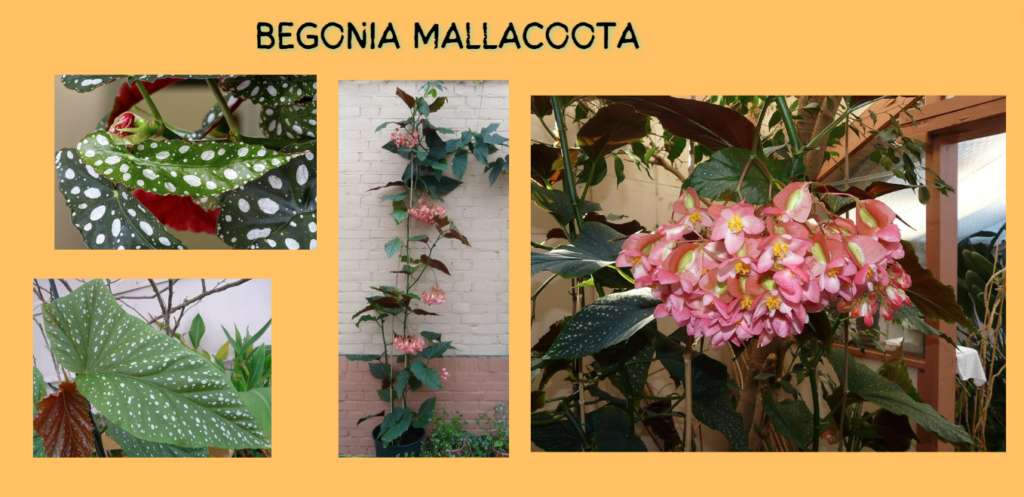Introduction
Begonia Mallacoota, more commonly known as Begonia maculata or the Polka Dot Begonia, is an extraordinary plant that has captivated the interest of horticulturists and plant enthusiasts worldwide. This guide provides an in-depth look at the Polka Dot Begonia, exploring its characteristics, care requirements, and unique appeal. Designed to surpass existing online resources, this article aims to offer a thorough and insightful perspective on this fascinating plant.
What is Begonia Mallacoota?
Overview of Begonia Mallacoota
Begonia Mallacoota (Begonia maculata) is a striking species of begonia native to the tropical regions of southeast Brazil. Known for its distinctive polka-dot pattern on its foliage, this plant has become a favorite among collectors and gardeners alike. The term “maculata” is derived from Latin, meaning “spotted,” which aptly describes the plant’s appearance.
Key Characteristics of Begonia Mallacoota
- Foliage: The Polka Dot Begonia features large, ovate leaves with a glossy, dark green surface adorned with silver or white spots. The undersides of the leaves are typically a deep red or maroon, providing a stunning contrast.
- Growth Habit: It is a perennial plant that can grow up to 2 feet in height and spread up to 3 feet wide. It has a compact, bushy growth habit.
- Flowers: Although the primary attraction of Begonia Mallacoota is its foliage, it also produces small, delicate white or pink flowers in clusters.
Historical and Botanical Background
Origin and Discovery
The Begonia Mallacoota was first discovered in the tropical rainforests of southeast Brazil, where it thrives in the humid, shaded understory. Its unique appearance quickly caught the attention of botanists and plant enthusiasts, leading to its introduction to other parts of the world.
Taxonomy
- Family: Begoniaceae
- Genus: Begonia
- Species: Begonia maculata
The Begonia genus encompasses over 1,800 species, with Begonia maculata being one of the most visually distinctive due to its polka-dot foliage.
Growing Begonia Mallacoota
Ideal Growing Conditions
To successfully cultivate Begonia Mallacoota, it is crucial to replicate its native tropical environment as closely as possible. Here are the key factors to consider:
1. Light Requirements
Begonia Mallacoota prefers bright, indirect light. Direct sunlight can scorch its leaves, so it’s best to place it in a location where it receives filtered light or dappled shade. A north or east-facing window is often ideal.
2. Temperature and Humidity
- Temperature: This begonia thrives in temperatures ranging from 65°F to 75°F (18°C to 24°C). It is sensitive to cold and should be protected from temperatures below 50°F (10°C).
- Humidity: Begonia Mallacoota enjoys high humidity. To maintain the right level, consider using a humidifier, placing the pot on a pebble tray filled with water, or grouping it with other humidity-loving plants.
3. Soil and Potting
- Soil: Use a well-draining, acidic potting mix. A blend of peat moss, perlite, and pine bark works well to ensure proper drainage and aeration.
- Potting: Choose a pot with drainage holes to prevent waterlogging. Repot the plant every 1-2 years or when it becomes root-bound.
Watering and Fertilization
1. Watering
Water Begonia Mallacoota when the top inch of soil feels dry. Overwatering can lead to root rot, so ensure the potting mix dries out slightly between waterings. During the winter months, reduce watering frequency as the plant’s growth slows.
2. Fertilization
Feed the plant with a balanced, water-soluble fertilizer every 4-6 weeks during the growing season (spring and summer). Reduce fertilization in the fall and winter when growth slows. Avoid over-fertilizing, as this can lead to leaf burn.
Pruning and Maintenance
Regular pruning helps maintain the plant’s shape and encourages bushier growth. Remove any dead or yellowing leaves and trim back any overly long stems to promote a compact, attractive appearance.
Common Issues and Troubleshooting
Pests and Diseases
Begonia Mallacoota is generally resistant to pests, but it can occasionally be affected by:
- Spider Mites: These tiny pests can cause leaf discoloration and webbing. Increase humidity and treat with insecticidal soap or neem oil.
- Mealybugs: These pests can appear as white, cotton-like masses. Remove them manually and treat with insecticidal soap or alcohol-soaked cotton swabs.
Diseases
- Powdery Mildew: A fungal disease that appears as white powdery spots on leaves. Improve air circulation and treat with a fungicide.
- Root Rot: Caused by overwatering or poor drainage. Ensure the potting mix is well-draining and adjust watering practices as needed.
Leaf Drop and Other Issues
- Leaf Drop: Can occur due to sudden changes in temperature, low humidity, or overwatering. Adjust the plant’s environment and care routine to address the issue.
Propagation Techniques
1. Leaf Cuttings
- Method: Select a healthy leaf with a petiole (leaf stem). Cut the leaf at the base of the petiole and place it in a pot with moist, well-draining soil. Cover with a plastic bag or a propagator to maintain humidity. Roots should develop within a few weeks.
2. Stem Cuttings
- Method: Take a 4-6 inch cutting from a healthy stem, ensuring it has at least one leaf node. Place the cutting in a pot with moist, well-draining soil and cover to maintain humidity. Roots should form in a few weeks.
Design and Decoration Ideas
1. Indoor Display
- Planters: Showcase Begonia Mallacoota in decorative planters that complement its striking foliage. Hanging baskets or stylish pots can highlight the plant’s unique appearance.
- Groupings: Group with other tropical plants to create a lush, vibrant indoor garden.
2. Outdoor Settings
- Shaded Areas: In suitable climates, Begonia Mallacoota can be grown in shaded outdoor areas, such as under trees or on patios with filtered light.
FAQs About Begonia Mallacoota
1. What is Begonia Mallacoota?
Begonia Mallacoota, commonly known as Begonia maculata or the Polka Dot Begonia, is a species of begonia native to southeast Brazil, known for its distinctive polka-dot patterned leaves and deep red undersides.
2. How do I care for Begonia Mallacoota?
To care for Begonia Mallacoota, provide bright, indirect light, maintain high humidity, and use a well-draining, acidic potting mix. Water when the top inch of soil is dry and feed with a balanced fertilizer during the growing season.
3. What are common issues with Begonia Mallacoota?
Common issues include pests such as spider mites and mealybugs, diseases like powdery mildew and root rot, and problems like leaf drop due to environmental stress.
4. How can I propagate Begonia Mallacoota?
Propagation can be done through leaf or stem cuttings. Use well-draining soil and maintain high humidity to encourage root development.
5. Can Begonia Mallacoota be grown outdoors?
In suitable climates, Begonia Mallacoota can be grown outdoors in shaded areas with filtered light. It is primarily an indoor plant in colder regions.
Conclusion
Begonia Mallacoota (Begonia maculata) is a visually stunning plant that adds a touch of elegance and intrigue to any indoor garden. Its unique polka-dot foliage and vibrant red undersides make it a standout choice for plant enthusiasts. By understanding its care requirements and potential issues, you can ensure a thriving and beautiful plant that enhances your living space. Whether you’re an experienced gardener or new to indoor plants, Begonia Mallacoota offers a rewarding and visually captivating addition to your collection.

















